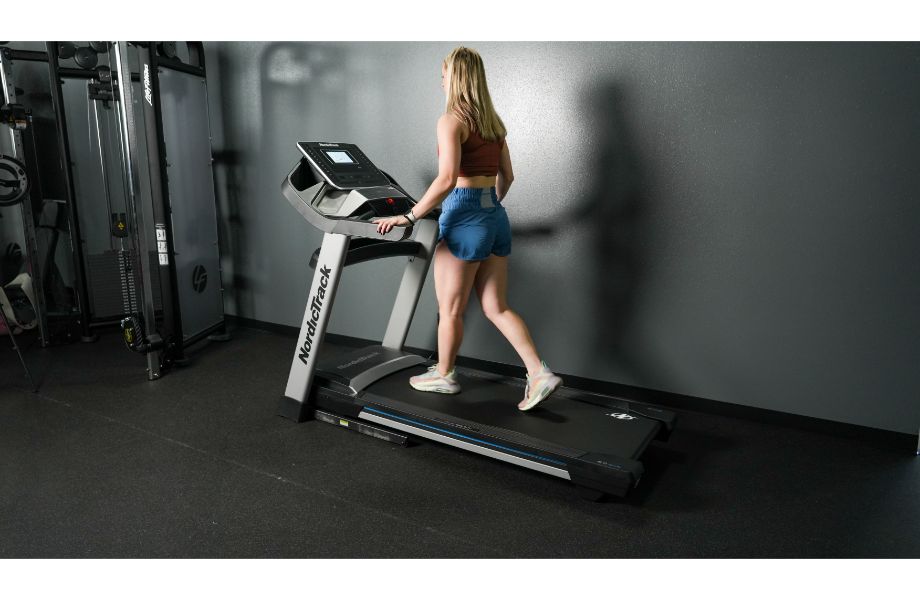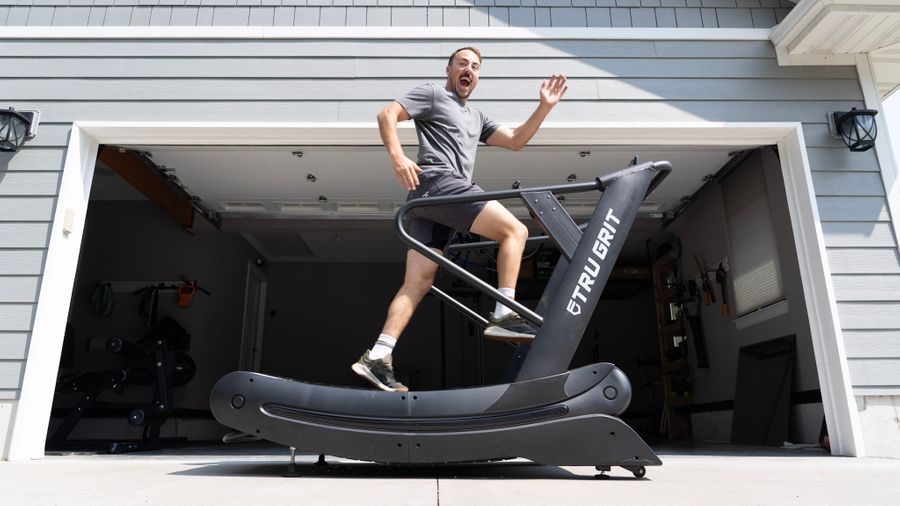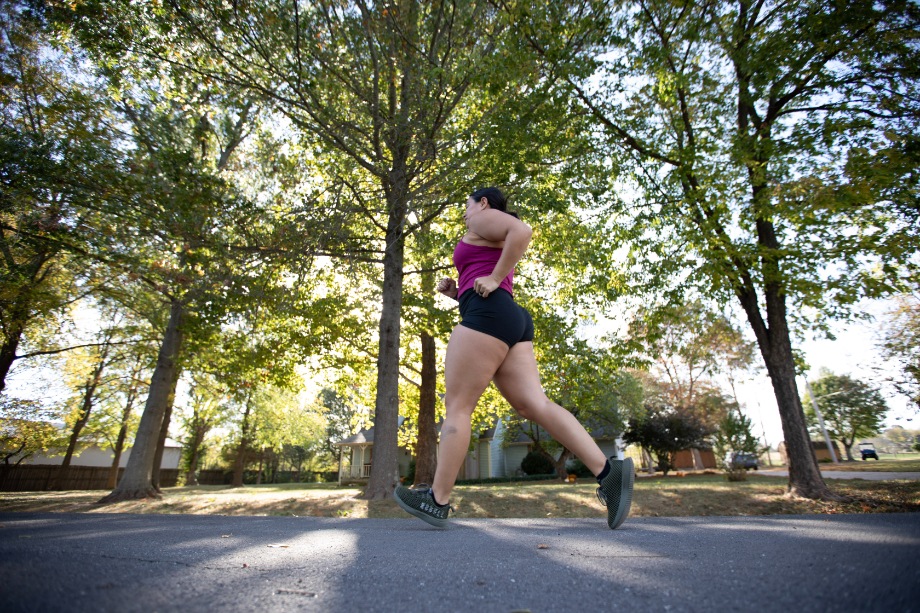We test and review fitness products based on an independent, multi-point methodology. If you use our links to purchase something, we may earn a commission. Read our disclosures.
We can give you an average, but it really depends on your height, stride length and how fast you’re moving.
As you set out on your next hot girl walk, you may be wondering “How many steps are in a mile?” The very vague answer is “it depends.”
Your height, specific step length, and speed largely influence how many steps it takes to go any amount of distance. The type of terrain you’re walking or running on also affects how much ground you’ll cover in a specified number of steps.
That being said, there are some averages you can go by. In this guide, we’ll go over the average number of steps in a mile, as well as how to calculate exactly how many you actually take.
Average Number of Steps in a Mile

According to the University of Oklahoma, women have an average step length of 2.2 feet and an average stride length of 4.3 feet. For men, this jumps to 2.5 feet and 5.2 feet, respectively. Based on these averages, there are about 2,112 to 2,400 steps in a mile.
But, as we mentioned above, if you want highly accurate numbers, it’s not that simple. Your walking pace, height, and the type of terrain play a huge role.
“Walking steps are not the same as running steps. You’ll take considerably more steps during two miles of walking than you will running for two miles,” says Amanda Capritto, certified personal trainer and health coach. “Incline miles are also different from decline miles. Stride length decreases when you’re going uphill and increases when you’re moving downhill.”
All that considered, it’s impossible to tell you exactly how many steps you take per mile, but here’s a better average breakdown from the ACSM’s Health & Fitness Journal based on different walking, jogging, and running speeds.
When Walking
| Men | Women | |
| 20-minute mile (average walking pace) | 2,176 | 2,310 |
| 15-minute mile (brisk walk) | 1,868 | 1,987 |
When Jogging
| Men | Women | |
| 12-minute mile | 1,919 | 1,979 |
| 10-minute mile | 1,635 | 1,709 |
When Running
| Men | Women | |
| 8-minute mile (fast run) | 1,360 | 1,469 |
| 6-minute mile (very fast run) | 1,064 | 1,213 |
How to Measure Your Steps
While these ballpark numbers are helpful, there are a lot of factors that come into play. Men and women have different heights, gaits, and stride lengths.
To that end, if you want a more accurate assessment of how many steps you take per mile, you can physically test it out by counting the number of steps you take to cover a certain distance and then doing some math to convert it as needed. There are a few ways to do it.
Note: You can use a fitness tracker, like a Fitbit or Apple Watch, or a pedometer to record your steps, but counting them in your head may be more accurate since these tools sometimes miscount, which can result in a readout that has fewer steps than you actually took.
Pre-Measured Mile

One of the easiest ways to determine how many steps it takes you to walk a mile is to actually walk the mile. You can measure out a mile in a walking app, like MapMyWalk or Footpath Route Planner, and then hit the pavement counting how many steps it takes you to complete the route. You can also do this with a half-mile and multiply your results by two.
Track
A track is another option. If your local gym doesn’t have one, many schools will allow you to use theirs after hours; just make sure to okay it with the administration first.
A standard track is a quarter-mile (1,320 linear feet) on the inside lane. Walk the track, counting your steps as you go. You can go around once, then multiply the number by four, or go around four times for a full mile. “Make sure you’re using a standard quarter-mile track and not a 400-meter track,” says Amanda. “Some school tracks aren’t a full quarter-mile, which can skew your results.”
Football Field
A football field, which measures 300 feet from goal post to goal post, is another option. Walk in a straight line from end to end once, counting your steps as you. When you’re done, multiply your result by 17.6.
Amanda says it’s best to do these “tests” a few times and then calculate an average step count with all the results. This helps account for random variations in step length or speed and gives a more accurate number.
How to Measure Your Step Length

You can also estimate how many steps you take per mile by calculating your step length. For reference:
- Step length is the distance from heel to heel when you take one full step.
- Stride length is the total distance covered when you take two steps.
There are two methods you can use to measure your step length.
Short Distance
If you want to do this at home, you can use a short distance measurement of about 50 feet. To measure:
- Get a piece of chalk or some painter’s or duct tape.
- Go outside and measure a straight line of 50 feet. Mark each end with the chalk or tape.
- Stand about 20 feet back from the start of your marked line, and start walking at your normal pace.
- Once you hit the chalk or tape, start counting your steps until you reach the other marked end.
- When you have your number, divide the total feet (50) by the number of steps you took. For example, if it took you 24 steps to get from end to end, you would divide 50 by 24 to come up with a step length of roughly 2.1 feet.
Long Distance
You can also do this with longer distances, like a 300-foot football field. The concept is exactly the same.
- Find a standard football field and stand about 20 feet behind the goal post. Start walking at your normal pace.
- Once you line up with the goal post, start counting your steps until you reach the other goal post.
- When you have your number, divide the total feet (300) by the number of steps you took. For example, if it took you 144 steps to get from end to end, you would divide 300 by 144 to come up with the same step length of roughly 2.1 feet.
Once you have your step length, you can divide the number of feet in a mile (5,280) by your individual step length. In these examples, your estimated steps per mile would come out to 2,514.
Keep in mind that the exact number of steps in any given mile still varies depending on your running or walking speed and the terrain. When you’re running, you have a much longer stride length than when you’re walking, but this will give you a more accurate assessment compared to just speaking in averages.
Related: Calories burned walking a mile
How Many Steps in a Mile: Final Thoughts
On average, there are about 2,112 to 2,400 steps in a mile. But there’s really no “average person,” and the exact number largely depends on your speed, height, and whether you’re moving up or downhill. If you’re trying to meet a daily step goal and you want to get specific, it’s best to measure your own step length to get a more accurate estimate.
How Many Steps In a Mile: FAQs
How many miles is 10,000 steps?
If you’re trying to reach a daily goal of 10,000 steps, you probably want to know how much mileage you’ll log at the end of the day. Since there are about 2,112 to 2,400 steps in a mile (depending on your step length), you’ll get in 4.2 to 4.7 miles total.
Does 5,000 steps equal one mile?
Five thousand steps is closer to two miles, or 2.08 to 2.4 miles, when working with the average step numbers.
Does walking help reduce belly fat?
Walking is an excellent (and often underrated) form of physical activity. Not only does it boost your fitness level, it also comes with other health benefits, like reduced blood pressure and weight loss, as long as you stay consistent. While you can’t spot reduce belly fat, walking can help you burn calories and contribute to overall body fat reduction when combined with a healthy diet.
Further reading

Build muscle and feel great doing these 10 strength-building squat rack exercises. Read more

The Rogue Ohio Bar is one of the most popular barbells in the world. To make an already great bar better, Rogue is now offering it in a Stainless Steel version that will have better corrosion resistance than most competitors. Read more

Bit off more than you could chew on a squat? Now worries! Knowing how to bail out of a squat mitigates the risk and saves your skin! Find out how here. Read more

A pair of high-quality sneakers can make or break your training session. Who likes to stop mid-workout to adjust the tongue or laces of their shoes, or wiggle their foot around to achieve more comfort? Likewise, feeling like you’re gonna topple over during squats or scrape your shin due to a failed box jump is a major workout mood-killer.That’s why good training shoes are so important, and that’s why I recommend the Reebok Nano X1s for most people who do CrossFit. In my Reebok Nano X1 review, the Garage Gym Reviews team shares our experience with the newest Nanos available. Why You Should Trust UsI’ve been testing fitness equipment for years. And you know what I have to wear while testing all of the best home gym equipment? Shoes. Not only have I spent years buying and tryingworkout shoes to find my favorite pairs for different types of workouts, I actually created an entire roundup of thebest CrossFit shoes to help you find the perfect pair of sneaks, too. Read more

